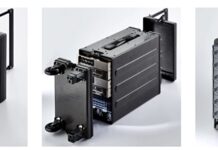Liqid, the composable infrastructure vendor, has won a $20.6m deal with the US Army Corps of Engineers – bagging its third supercomputer contract in a month.
In August, Liqid scooped up two DoD contracts, totalling nearly $32m for two composable systems, with a combined 15 petaflops, that will run physics-based, AI, and ML applications for the US High Performance Computing Modernisation Program. The latest win is also part of that program.
The new system will live at the Engineer Research and Development Center (ERDC) in Mississippi and The new Liqid system will enable the ERDC to design physical infrastructure that can withstand disasters.
At time of writing, the system will rank at number 15 on the TOP500 ranking of the world’s most powerful high-performance computing (HPC) platforms.

Liqid claims it will deliver unparalleled resource utilisation for the ERDC’s AI-driven data analytics operations.
Eric Slack, an analyst at the Evaluator Group, said in a statement: “Composable, disaggregated infrastructure solutions provide an adaptive supercomputing ‘backbone’ for the physical infrastructure challenges faced daily by engineers at the ERDC. … Composable HPC will manage their hardware footprint more efficiently and achieve the kind of adaptive data performance necessary to address data-intensive workloads that have different requirements at varying stages.”
Compose thyself
The 17 petaflop ERDC system incorporates Nvidia GPUs, 4.5 PB of all-flash NVMe-oF parallel file system storage, and the PCIe 4.0 bus for fast data transfer.
Liqid’s CDI orchestration software dynamically composes GPUs, NVMe SSDs, networking, and storage-class memory to create software-defined bare metal servers on demand.
ERDC data scientists will be able to compose the exact amount of Nvidia A100 GPU performance needed, dynamically orchestrating any CPU-to-GPU ratio. The system incorporates other accelerators across PCIe 4.0, Infiniband, and Ethernet fabrics as required, for a balanced system to run their AI workloads.
These workloads are data intensive and uneven in system component demands. A fixed resource system would be over-provisioned whereas a composable system dynamically matches resources to application needs.
Overall Liqid would argue that individual resource class utilisation; meaning CPU, GPU, NVMe SSDs, etc., will be higher in its composed systems than in a fixed configuration because that, the fixed config, will be sized and costed for the largest-possible workload, meaning wasted resources when smaller workloads can’t run because other workloads take priority.
With its composability two, there or more more smaller workloads can run at the same time making better use of the various supercomputer component resources. This means, it would argue, that the total cost of ownership (TCO) of a composable Liqid system will be less than the equivalent fixed configuration TCO.
With this momentum for Liqid, HPE might be feeling competitive heat to upgrade its Synergy composable infrastructure product to include new GPU and PCIe Gen 4 support.
The ERDC system includes;
- The Liqid composable disaggregated infrastructure (CDI) software platform
- 86,784 Intel Xeon Platinum 9200 compute cores
- 536 NVIDIA A100 GPUs
- 391 TB of memory including storage-class memory
- Liqid parallel file system storage integrated with existing storage filesystem
- QM8700 Series Mellanox Quantum HDR 200Gbit/s InfiniBand Smart Switches
The system is expected to enter production service in mid 2021.








